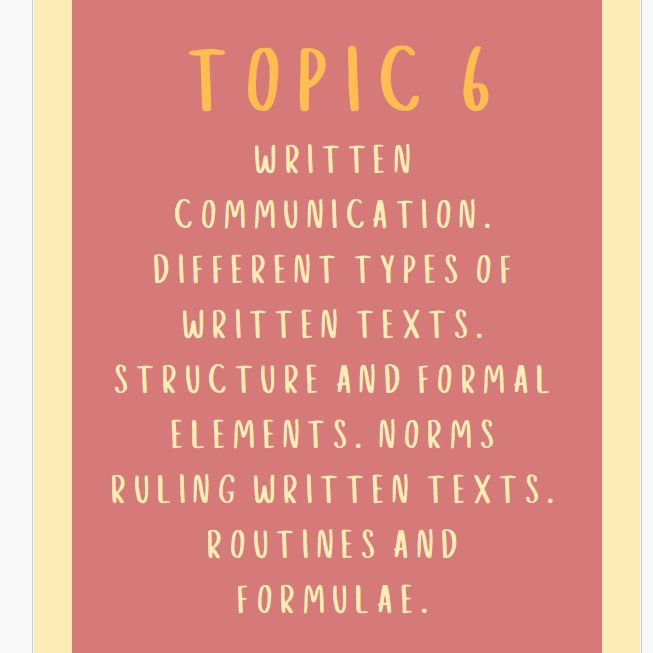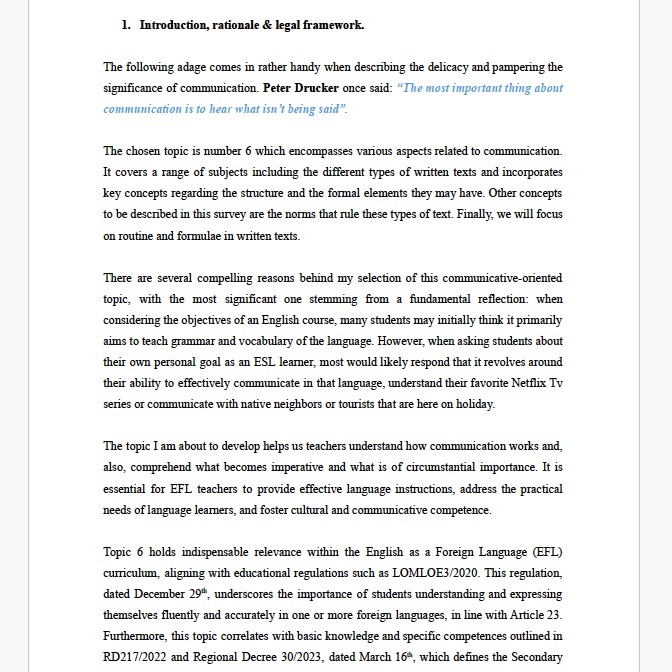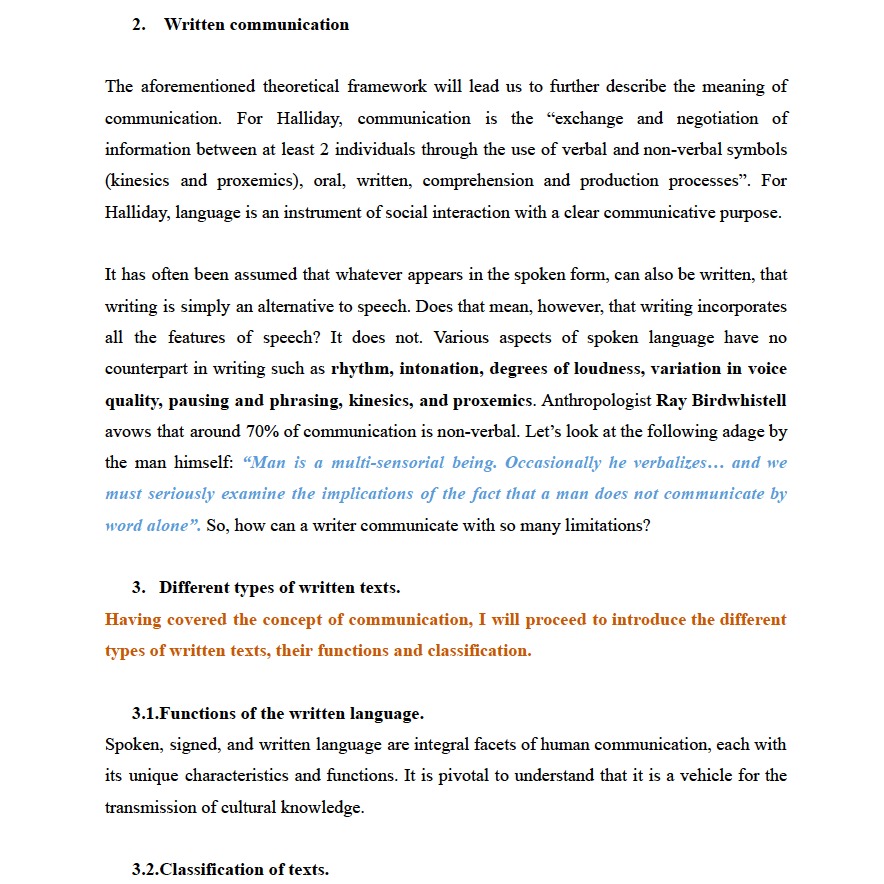This topic deals with the nature of written communication, its functions, types, and the conventions that govern it. Written language is characterized by permanence, planning, and formality, which distinguish it from spoken communication.
Different types of written texts serve diverse purposes —informative, expressive, persuasive, or directive— and can be classified by genre (letters, reports, articles, etc.) and text type (narrative, descriptive, expository, argumentative).
The formal elements of written language include lexical density, syntactic complexity, and coherence. Written texts tend to use precise vocabulary, complex sentences, and cohesive devices that ensure clarity and logical structure.
Regarding the norms ruling written texts, effective writing depends on text organization, cohesion, coherence, intentionality, and adherence to social conventions. The context and relationship between writer and reader influence tone, register, and style.
Finally, the topic explores routines and formulae commonly used in specific written forms, such as postcards, formal and informal letters, application forms, CVs, summaries, and reports —each with its own structure and set phrases that facilitate communication.
In conclusion, written communication is a fundamental skill in language learning, allowing students to express ideas effectively and appropriately in different contexts and for various purposes.



